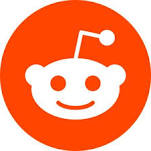I Built A $1.5M/Year Data Leak Deterrence SaaS
Hello! Who are you and what business did you start?
Hi! I’m Sergey, a serial entrepreneur in the booming cybersecurity industry and the founder of G-71 with an annual turnover of almost $2 million. I have been working in IT since 2001. I started as a consultant and project manager, then worked as a top manager of several international companies. Today, more than 110,000 people use solutions developed by my companies.
My main business is a New York-based data leak deterrence software company, G-71, that created the state-of-the-art information security solution LeaksID to deter leaks of sensitive documents in addition to the DLP systems and to detect leak sources in the case of an incident. In 2021, G-71 went through the Alchemist acceleration program and launched a cloud-based solution.
Our solution

Download the report and join our email newsletter packed with business ideas and money-making opportunities, backed by real-life case studies.

Download the report and join our email newsletter packed with business ideas and money-making opportunities, backed by real-life case studies.

Download the report and join our email newsletter packed with business ideas and money-making opportunities, backed by real-life case studies.

Download the report and join our email newsletter packed with business ideas and money-making opportunities, backed by real-life case studies.

Download the report and join our email newsletter packed with business ideas and money-making opportunities, backed by real-life case studies.

Download the report and join our email newsletter packed with business ideas and money-making opportunities, backed by real-life case studies.

Download the report and join our email newsletter packed with business ideas and money-making opportunities, backed by real-life case studies.

Download the report and join our email newsletter packed with business ideas and money-making opportunities, backed by real-life case studies.


















